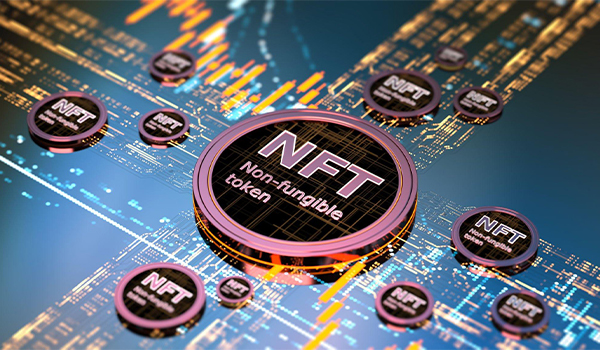Introduction to NFTs
Non-Fungible Tokens (NFTs) have been making waves in recent years, as a new way to represent ownership and trade digital assets. From digital art to collectibles, gaming items to real estate, NFTs have a wide range of potential use cases that are changing the way we think about ownership, scarcity and value. In this article, we’ll take a closer look at NFTs, how they work, their advantages, challenges and the future of this exciting technology.
A Non-Fungible Token (NFT) is a unique digital asset that represents ownership of a specific item or piece of content. Unlike traditional cryptocurrencies, NFTs are not interchangeable or equal in value. Each NFT is unique and one-of-a-kind, much like a physical item. NFTs are created using blockchain technology, which allows for secure, verifiable and transparent record-keeping of ownership and transactions.
The use of NFTs for digital assets dates back to the early days of cryptocurrency, with the first NFTs appearing on the Bitcoin blockchain in 2012. However, it wasn’t until the rise of Ethereum in 2015 that NFTs started to gain significant attention, as Ethereum’s blockchain allowed for more sophisticated NFTs and the creation of decentralized applications.
How NFTs are different from traditional tokens
NFTs are different from traditional cryptocurrencies like Bitcoin or Ethereum, as they are unique and non-interchangeable. This means that each NFT is different and has a different value based on its uniqueness, scarcity and demand. In contrast, traditional cryptocurrencies like Bitcoin have a fixed supply and each token is interchangeable and has the same value as every other token.
Non-fungible Tokens Market Scenario
According to a latest study by Emergen Research, the global NFTs market size reached USD 15.54 Billion in 2021 and is expected to reach USD 214.57 Billion in 2030 registering a CAGR of 12.2 %. The non-fungible tokens market is driven by several factors, including:
- Increased interest from artists and creators – As more artists and creators discover the potential of NFTs as a new form of digital ownership and trade, there has been a surge in interest and investment in the NFT market.
- Growing recognition of NFTs as a form of investment – With the ability to hold and trade unique digital assets, NFTs are increasingly being recognized as a form of investment with the potential for appreciation in value.
- The growth of blockchain technology – As blockchain technology continues to evolve and mature, it is enabling the creation and trade of NFTs in new and innovative ways.
- The rise of decentralized finance (DeFi) – NFTs are becoming an important component of the DeFi ecosystem, enabling new and innovative financial products and services built on blockchain technology.
- The expansion of the gaming industry – The growth of the gaming industry has been a key driver for the growth of NFTs, as more and more games are incorporating NFTs as a way to reward and recognize player achievements.
Use Cases of NFTs
NFTs have a wide range of potential use cases, some of which are already being explored, while others are still in the early stages of development. Some of the most popular use cases for NFTs include:
- Digital Art and Collectibles – NFTs are being used to sell and trade digital art and collectibles. This allows artists and collectors to sell unique and valuable digital assets, without the need for a middleman.
- Gaming items and in-game assets – NFTs are being used to represent ownership of in-game items, such as weapons, skins, and other virtual items. This allows players to own, trade and sell these assets, creating a new market for virtual goods.
- Real Estate and Land ownership – NFTs are being explored as a way to represent ownership of virtual real estate, such as virtual land in a video game or virtual reality environment.
- Music and Entertainment industry – NFTs are being used to sell unique experiences, such as concert tickets or backstage passes, as well as to sell digital music and other media.
Advantages of NFTs
NFTs offer several key advantages over traditional methods of ownership and trade of digital assets. Some of the most significant advantages include:
- Unique and verifiable ownership – NFTs allow for verifiable and secure ownership of digital assets, without the need for a trusted third-party.
- Immutable and secure transaction records – NFTs use blockchain technology, which allows for secure and transparent record-keeping of ownership and transactions. This ensures that ownership rights are protected and cannot be altered or tampered with.
- Potential for increased value and scarcity – NFTs can be created in limited quantities, which increases their scarcity and potential value. This creates new opportunities for investment and trade in unique digital assets.
Challenges with NFTs
While NFTs offer many advantages, there are also some challenges that must be addressed in order for NFTs to reach their full potential. Some of the biggest challenges include:
- Technical hurdles for new users – NFTs require a certain level of technical understanding and knowledge, which can be a barrier for new users who may not be familiar with blockchain technology and digital wallets.
- Lack of standardization and interoperability – There is currently a lack of standardization in the NFT space, which can make it difficult for NFTs created on one platform to be used or traded on another. This limits the ability for NFTs to reach their full potential as a universal and interoperable form of digital ownership.
- Environmental concerns and energy usage – NFTs are created and traded on blockchain networks, which require significant energy and computing power. This raises concerns about the environmental impact of NFTs and the need for more sustainable and energy-efficient solutions.
Future of NFTs
The future of NFTs is still uncertain, but there are many predictions about their growth and potential impact on traditional industries. Some of the key trends and predictions for the future of NFTs include:
- Predictions for the growth of NFTs – Many experts predict that the market for NFTs will continue to grow and mature, as more artists, creators and consumers adopt this new form of digital ownership.
- Potential impact on traditional industries – NFTs have the potential to disrupt traditional industries, such as the art world, by creating new opportunities for ownership and trade of unique digital assets.
- Ethical considerations and potential consequences – As NFTs continue to grow and evolve, there will be a need for ethical considerations and a discussion about the potential consequences of this technology, such as the impact on privacy, intellectual property rights and the wider implications for society.
Conclusion
NFTs represent a new and exciting form of digital ownership and trade of unique digital assets. With the potential for increased value and scarcity, NFTs offer many advantages over traditional methods of ownership and trade. However, there are also challenges that must be addressed in order for NFTs to reach their full potential, such as technical hurdles, lack of standardization and environmental concerns. The future of NFTs is still uncertain, but there are many exciting trends and predictions for their growth and impact on traditional industries. As the NFT space continues to evolve and mature, it will be important to consider the ethical considerations and potential consequences of this technology.










![How to Fix [pii_email_096d854470c8a6a62b16] Error Code? [pii_email_096d854470c8a6a62b16]](https://www.techwebtopic.com/wp-content/uploads/2022/02/pii_email_096d854470c8a6a62b16.jpg)





